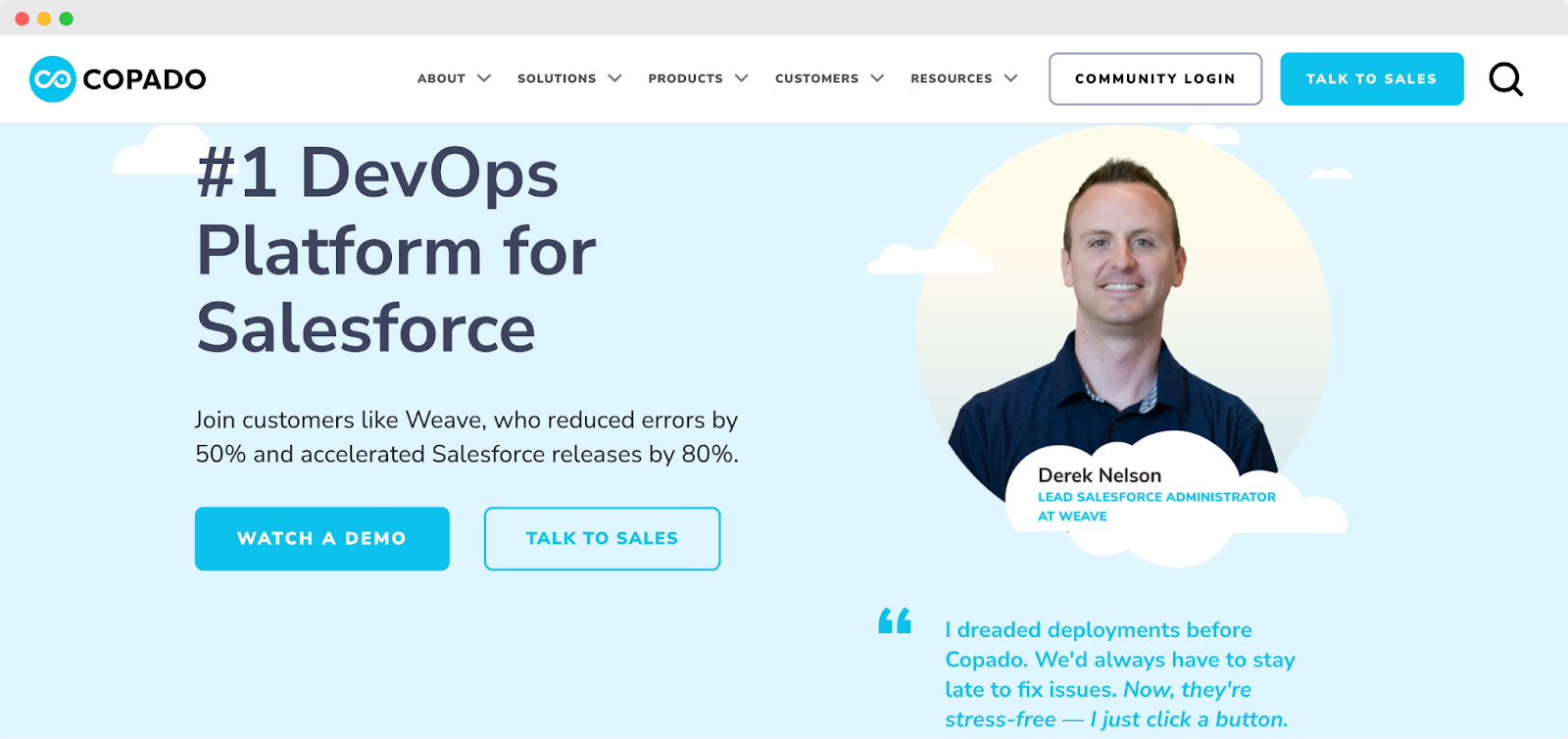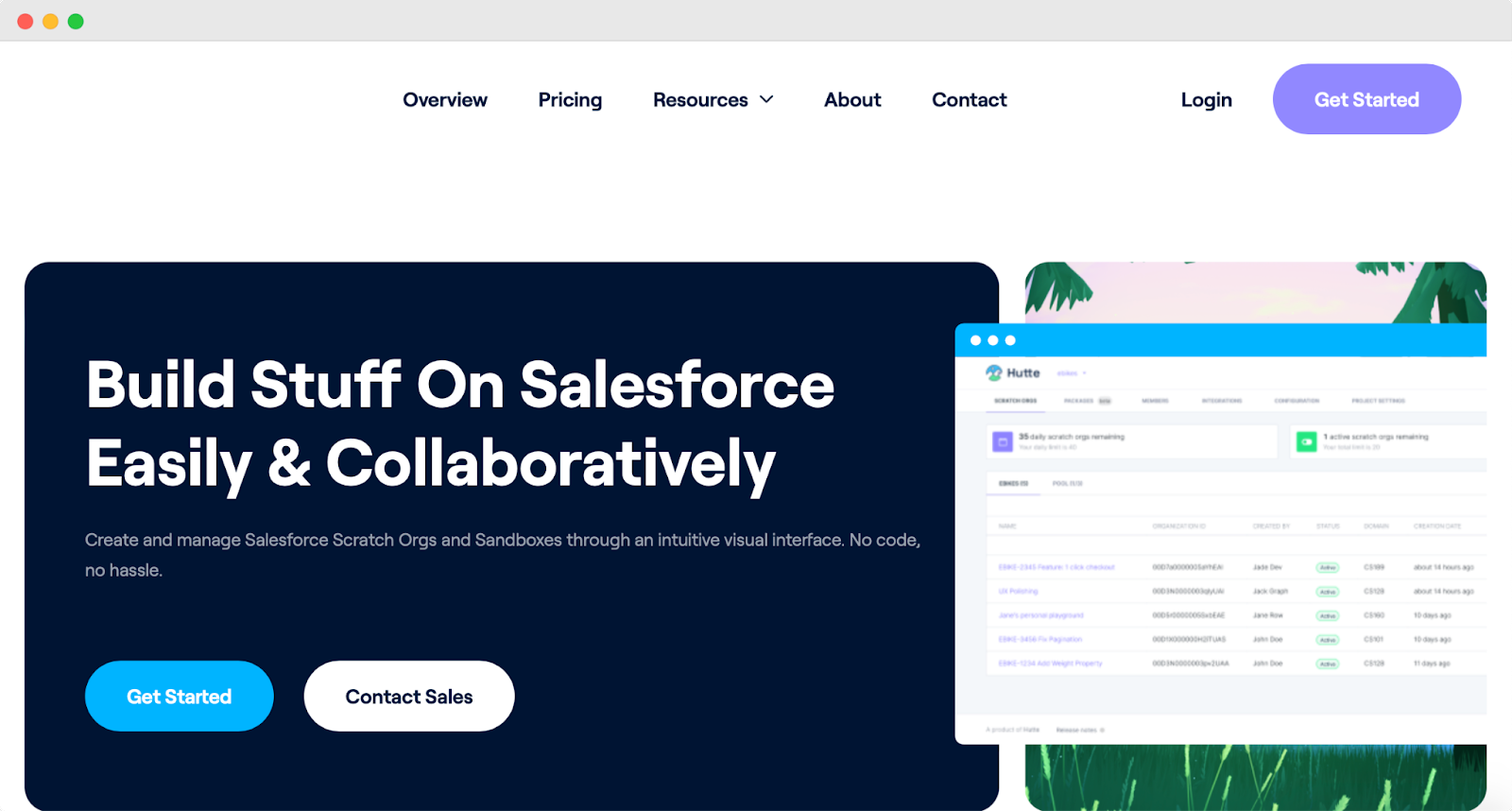One

They automate tasks such as version control, automated testing, and continuous integration/continuous delivery (CI/CD), guaranteeing seamless and flawless deployments.
Moreover, these tools foster collaboration among development teams, facilitating coordination, enhanced visibility, and effective change management.
By doing so, they assist organizations in achieving accelerated time-to-market, heightened agility, and enhanced reliability for Salesforce applications.
Two of the top Salesforce DevOps tools in the market are Copado and Salto.
Now, let's delve into the offerings, advancements, and constraints of these three tools in the realm of Salesforce DevOps.
Best For Release Management: Copado

Image Source: Copado
Pricing: Plans that range from $2K and above.
Core features: Automated (robotic) UI testing, multi cloud deployment, continuous delivery for deployment processes, and built in governance and compliance.
Copado is a renowned cloud-based platform that facilitates efficient DevOps and release management for Salesforce applications.
It encompasses a comprehensive suite of tools and features that cater to the entire application development lifecycle, including planning, building, testing, deployment, and release.
With its wide array of capabilities, Copado has gained popularity among organizations seeking to streamline their software development and deployment processes. It provides numerous benefits, aiding in the seamless management of Salesforce applications throughout their lifecycle.
Here are some of the key benefits of using Copado:
The tool is designed to scale to the needs of any organization, whether it's a small business or a large enterprise
Copado enables agile development
With Copado, you can easily manage and track changes to your Salesforce code and configurations
It offers robust security features to protect your Salesforce data and configurations
Copado's automation features help to streamline the software development process
Copado’s limitations include:
Copado is a comprehensive Salesforce DevOps platform with many features and capabilities
Copado is a subscription-based platform, which involves ongoing costs for organizations
Copado integrates with various external systems, such as version control repositories, CI/CD tools, and deployment environments
Implementing and managing Copado effectively may require dedicated resources, including administrators or DevOps specialists who can oversee and maintain the platform
Best For Exploring Metadata: Salto

Image Source: Salto
Pricing: Pricing tiers can be requested when starting a free trial.
Core features Salto provides a unified view of the configuration of Salesforce, it enables collaboration across teams, and it deploys changes quicker.
Salto is an open-source software configuration management tool used to manage and automate the deployment of changes to complex software systems.
It is designed to work with cloud-based applications, particularly software-as-a-service (SaaS) platforms, such as Salesforce, HubSpot, and NetSuite.
Here are some of the key benefits of using Salto:
Salto is highly customizable and extensible
Salto uses declarative language to define the desired configuration of the software system
Salto automates the deployment process
Salto is designed to handle large-scale deployments and can support multiple Salesforce orgs simultaneously
Salto’s limitations include:
Salto primarily focuses on Salesforce metadata deployment and version control
It may take some time for your team to become familiar with its declarative syntax, concepts, and best practices
While Salto supports native integration with Salesforce, its out-of-the-box integrations with other third-party tools and services may be limited
Salto relies on the Salesforce metadata API for interacting with Salesforce metadata
Best For Source-Driven Development: Hutte

Image Source: Hutte
Pricing: There is a free plan and paid for plans that range from $25 and above.
Core features: Hutte allows teams to build and ship work on the Salesforce platform more efficiently. Teams don't need to learn how to install and use command-line tooling and Git. Users can take a fully prepared development environment (scratch org) from the pool.
At Hutte, we enable you to visually leverage the benefits of Git-based development without needing CLI. We have removed the barriers Git can pose as Hutte is a web UI to SFDX that allows for visual Salesforce version control.
Here are some of the key benefits of using Hutte:
You can create and manage Salesforce scratch orgs and sandboxes
From Hutte’s integrated hosting providers, you can view the changes you made
Your team does not need to wait for another scratch org to spin up if they can take one from the pool
Hutte offers access to Salesforce's full capabilities
Hutte’s limitations include:
- Limited customer support
- Limited integrations.
Start your free 30-day trial, or check out our demo below.
Explore The Boundless Potential Of Git
Embark on an exhilarating journey where chaos dissipates and the harmonious symphony of streamlined development processes takes center stage.
In this grand adventure, tools like Hutte emerge as the bridge, effortlessly connecting individuals of diverse backgrounds and skill levels. Collaborate effortlessly, easily modify code, and forge a new path by crafting pull requests.
One
| This is test | This is test | This is test |
|---|---|---|
| This is test | This is test | This is test |
| This is test | This is test | This is test |

